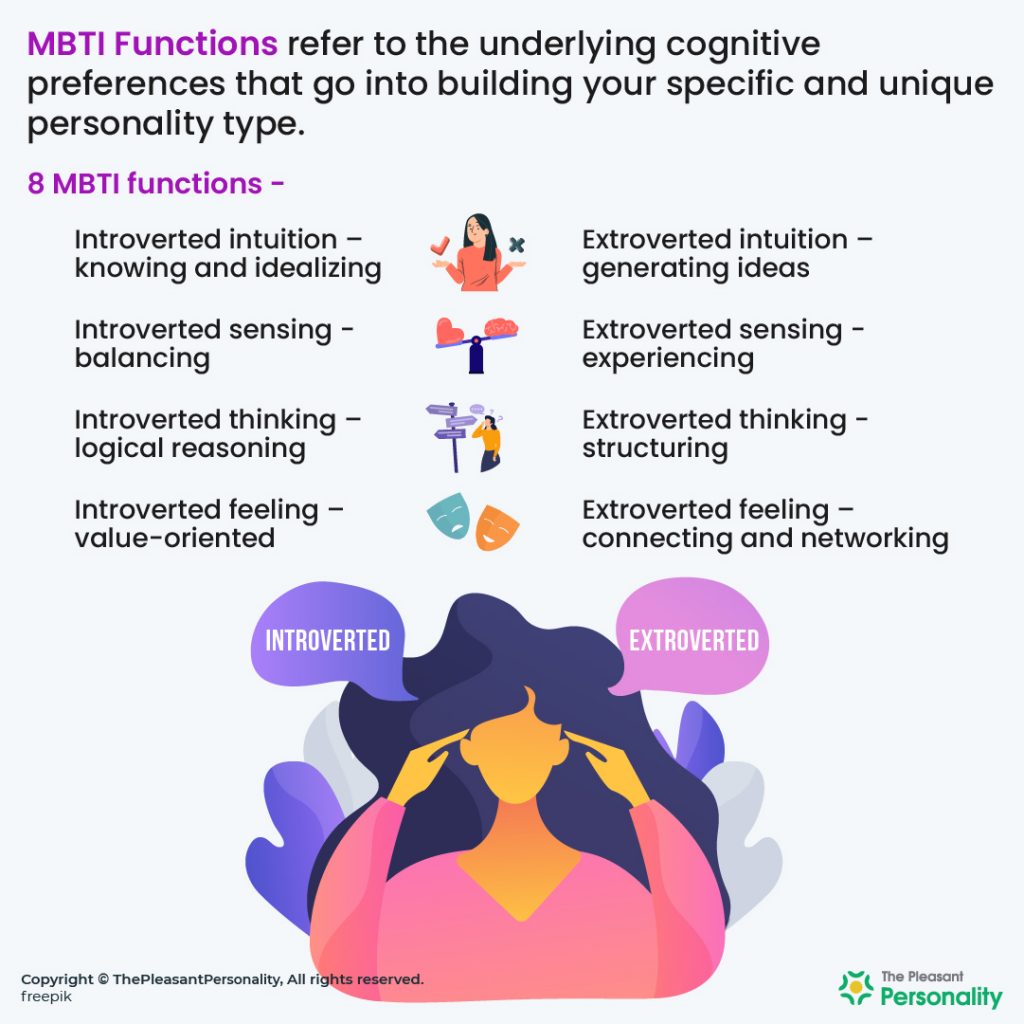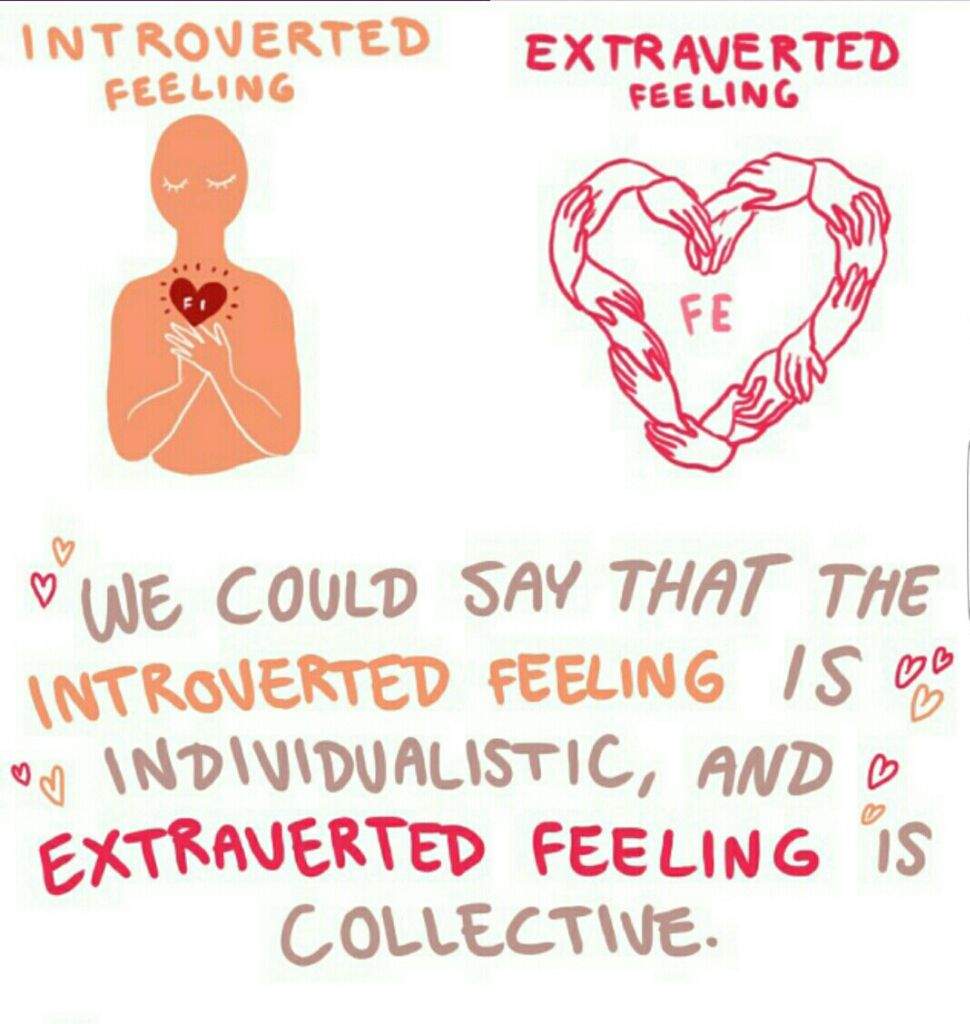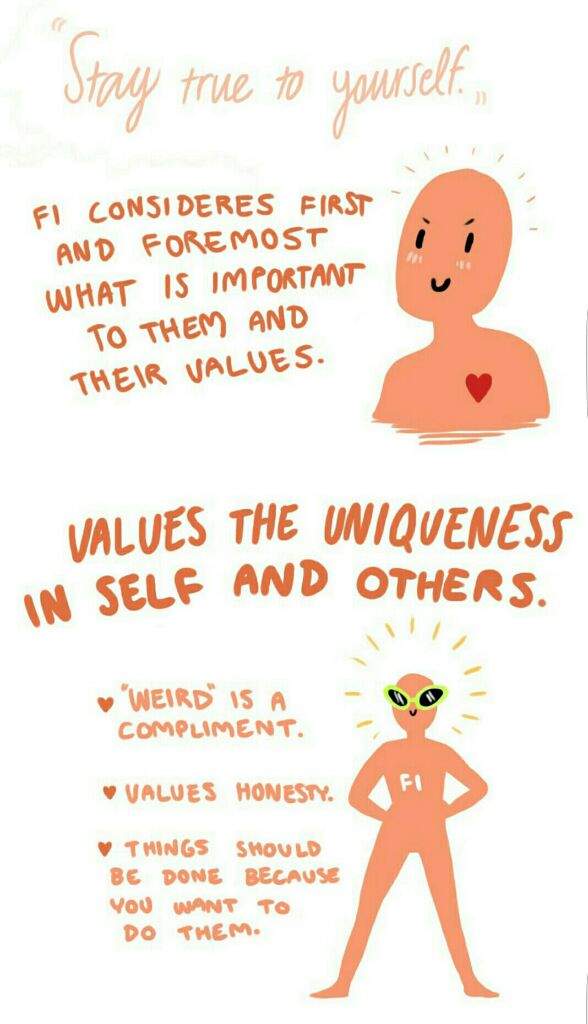
Fi Fe Difference Chrisyel
3. Fi is more aware of self, while Fe is more aware of others. A key distinction between Fi and Fe is the direction of their emotional awareness. Fi is an introspective function, closely relating one's emotions to one's identity. As a result, Fi users (especially the dominants) tend to be in a constant state of self-searching.

INTP and Ti Introverted thinking, Mbti, Mbti personality
Fe is proactive and aligns with what's external (hence the emphasis on collective value), Fi is reactive and reacts to what's external prioritizing personal value, only aligning with what's external it if it personally values it. Fe is more easy-going and common sense orientated as not everything needs to be ripped apart and examined to see if.

Fi vs Fe Myers Briggs [MBTI] Amino Extraverted, Mbti, Mbti
In this article, we'll go over one of the 8 cognitive functions of the Myers Briggs types: introverted feeling (Fi).. Fi vs Fe: The Difference Between Introverted and Extroverted Feeling. Introverted feeling (Fi) and extroverted feeling (Fe) are both feeling functions, but they have different ways of processing and expressing emotions..

MBTI FE VS FI (FUNCIONES COGNITIVAS) YouTube
As you can see above, eight MBTI types use the Fi function. However, its position on their function stack determines how much each type relies on this cognitive function.. The difference between Fe and Fi is its focus. While Fe is focused on group harmony, Fi is focused on internal harmony. Thus, Fe prioritizes the group's needs and wants.

Myers briggs type indicator mbti the 16 personality types Artofit
The best way to determine type is to identify which of the four perceiving functions (Either Se, Si, Ne or Ni) and which of the four decision making functions (Either Te, Ti, Fe or Fi) an individual uses most often and which order they use them in. Keep in mind that of those two dominant functions, one must be introverted and one must be.

What Do You Need to Know About MBTI Functions? (2023)
Fe is more aware of others. They observe and notice people's gestures, appearances, and other cues. They do this to make sure they do or say the right thing. This keeps things going smoothly. On the other hand, Fi is more aware of their internal values. They know their likes, dislikes, and beliefs thoroughly.

Fi vs. Fe Meyers Briggs Personality Test, Accurate Personality Test
Fi wants authenticity and being true to yourself and others AND THEN to have harmony and be liked by others; while Fe wants to be liked by others and for everyone to feel good and harmony AND THEN authenticity and all that stuff. Both of them are good in their own way, it's just the way your perceive them. They do the same thing in a reversed.

Fi Fe MBTI Feeling Mbti, Extraverted, Mbti personality
ESFP: Se > Fi > Te > Ni. ISTP: Ti > Se > Ni > Fe. ISFP: Fi > Se > Ni > Te. ISFJ: Si > Fe > Ti > Ne. ESFJ: Fe > Si > Ne > Ti. ESTJ: Te > Si > Ne > Fi. ISTJ: Si > Te > Fi > Ne. Conclusion. In this article, we explored the 8 MBTI cognitive functions in detail. This article also explored the dominant, auxiliary, tertiary and inferior cognitive.

Fi vs Fe Myers Briggs [MBTI] Amino
Extraverted Feelers (Fe) and introverted Feelers (Fi). Here's the basic difference: Fi weighs inner life and feeling before considering the outward repercussions, whereas Fe tends to make decisions based the outward environment and how their feelings will affect their physical world. It is important to note that each Feeler will consider.

《Cognitive Functions Fe vs. Fi》 Myers Briggs [MBTI] Amino
Fe types are in tune with other people's emotions. Showing sympathy through mutual feelings. Higher Fe users are vast in scope when it comes to the detection and flow of emotions. Emotional logic pertains to the tracking of group dynamics and motivations. Fi types are in tune with their own emotions.

Ti vs Te Mbti, Mbti personality, Infp
Extraverted Feeling (Fe) is a cognitive function present in eight of the 16 Myers-Briggs personality types. Types who are Fe dominant include ESFJ, and ENFJ, whereas INFJs and ISFJs use Extraverted Feeling as an auxiliary function. Knowing where Extraverted Feeling stands in your function stack can help you understand why you make decisions and.

Fi vs Fe Myers Briggs [MBTI] Amino Mbti, Mbti relationships, Mbti
Diplomacy - commonly associated with Fe. Fi: respecting individual differences and freedom. Te: impersonal justice, impartiality, making sure that everyone has equal treatment. Fe: trying to find the "common ground", making sure that everyone's needs are respected. Ti: accepting that people are allowed to have different opinions and.

《Cognitive Functions Fe vs. Fi》 Myers Briggs [MBTI] Amino
Fe: playful manipulation/social confidence. Tertiary Fe is wielded by the Ne and Se dominants. Again, this will give the tertiary function a distinct perceiver twist. This may cause their form of Fe to come off sharper or more Te like when poking at someone else in the group. Being that Se and Ne are usually somewhat more laid back in nature.

just an enfp using Ne. Infp personality type, Mbti, Infp vs intp
Fi is more independent Vs. Fe wants to fit in. Fi is individualistic and likes to stay true to themselves, while Fe types tend to be more interdependent and pay more attention to what others think. Fi types are more likely to be seen as independent, while Fe types tend to come across as more social and people-oriented.

DECIDERS Fi Fe Ti Te YouTube
The FiNe's functions are: 1. Fi - introverted Feeling. Although it's referred to as "Feeling", Fi is not internal emotions, but rather values that come from within. FiNe's might experience a deep well of emotions, but this is not the root of Fi.

MBTI Cognitive Functions Cheat Sheet — Part 2 by Robin Nemesszeghy
Interestingly, despite being a Feeling function, Fi is not really a social (or socializing) function. Fe types (especially EFJs) are typically stimulated by being around and engaging with people; Fe is characteristically interpersonal. Fi, by contrast, is intrapersonal. It involves a relationship with oneself, with one's own emotions, tastes.